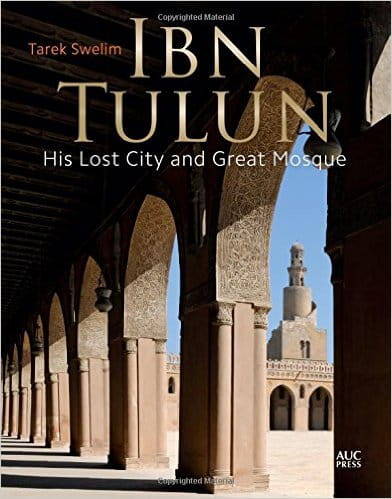
Ibn Tulun: His Lost city and Great Mosque
Tom Verde
Tarek Swelim
2015, AUC Press, 978-9-77416-691-4, $49.95 hb.
This elegant, richly illustrated volume covers the history, architecture, folklore and cultural significance of Africa's "longest surviving" mosque. Built by Abbasid Governor Ahmad Ibn Tulun between 867 and 879, it was the centerpiece of his new city of al-Qata’i, northeast of Fustat, the earliest Arab settlement in Egypt (both now part of Cairo). Tarek Swelim comprehensively documents the building's "glorious architecture," focusing on its elegant inscriptions, pointed arches (among Egypt's first), famed scroll-shaped minaret and more. He also examines periods of neglect, e.g., during the Crusades of the 13th century when Mamluk sultans had their hands full elsewhere, and restoration, such as the work undertaken early in the 20the century by King Fuad. Filled with modern and historical images, maps and illustrations, including 3D renderings of the structure throughout its history, the book's design provides visual context for the mosque's important role in the history of Egypt and Islamic architecture.
You may also be interested in...
Celebrate Women's History Month With These Reads on Women Throughout History
To help honor Women’s History Month, AramcoWorld brings you a list of 10 female-focused reads that celebrate women throughout history.
Dissolved Monopoly’s Legacy Hinges on How India Honors Its Political Architecture
From the first fortified trading post in northeastern India, historian Rosie Llewellyn-Jones tracks the physical changes wrought by the English East India Company.
Ancient Egyptians Still Have Things to Teach Us
Socrates and other Greek thinkers admired Egypt for its philosophical tradition. This new translation of a manuscript as old as the pyramids shows us why.